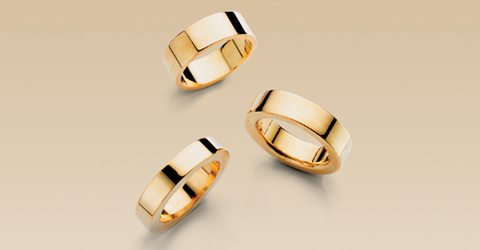

Gold has been known and highly-valued since the beginning of time. Use of gold is documented as early as 2600 BC in Egyptian hieroglyphs. The Romans were the first to develop methods to extract gold in large scale using hydraulic mining methods. In the Western Hemisphere, the Mali Empire was famous for its large amounts of gold and the search for gold was one of the primary reasons for the exploration of the new world.
Since the beginning of time, gold has been considered the most desirable precious metal, and has been used as a source of currency and beauty. Much of the gold mined throughout history is still in circulation in one form or another.
Gold is measured by troy weight and by grams and when alloyed with other metals the term karat is used to indicate the amount of gold present. A single karat is a measurement of 1/24th purity, and thus pure gold is "24K" or ".999 fine" (the world standard for pure gold). Pure gold is extremely malleable: a single ounce of it can be drawn into a wire 50 miles long (nearly 80.5 kilometers). The purest gold in the world—0.9999—is manufactured only in Russia.
The price of gold is determined on the open market. The high price of gold is due to its rare amount. Only three parts out of every billion (0.000000003) in the Earth's crust is gold.
Gold used in jewelry—which must be durable—is gold that has been combined with an alloy (base metal), which lends strength and hardness to the beauty of the gold. Alloys with lower caratage, typically 22k, 18k, 14k or 10k, contain higher percentages of copper, silver or other base metals in the alloy. The choice and proportions of the alloyed metals—typically silver, copper, nickel and zinc—can also change the color of the final piece.
The most common gold hues are yellow, white, pink/rose, and green, but the uncommon and striking shades of blue, purple and black are also available. The composition of the alloyed metals in the gold alloy is what lends any individual piece of gold its color. Examples of alloying formulas to achieve gold color variances include:
Iron is used as an alloy to create blue and black gold. For purple, fine gold is alloyed with specific percentages of aluminum, tin, and thorium. In a 14K or 18K karatage, all colors of gold will have similar durability and longevity. The choice of color is largely an aesthetic one. Unusual colors can be used to create a unique and striking piece of jewelry. For the best combination of both beauty and durability, 18K gold is an excellent choice.